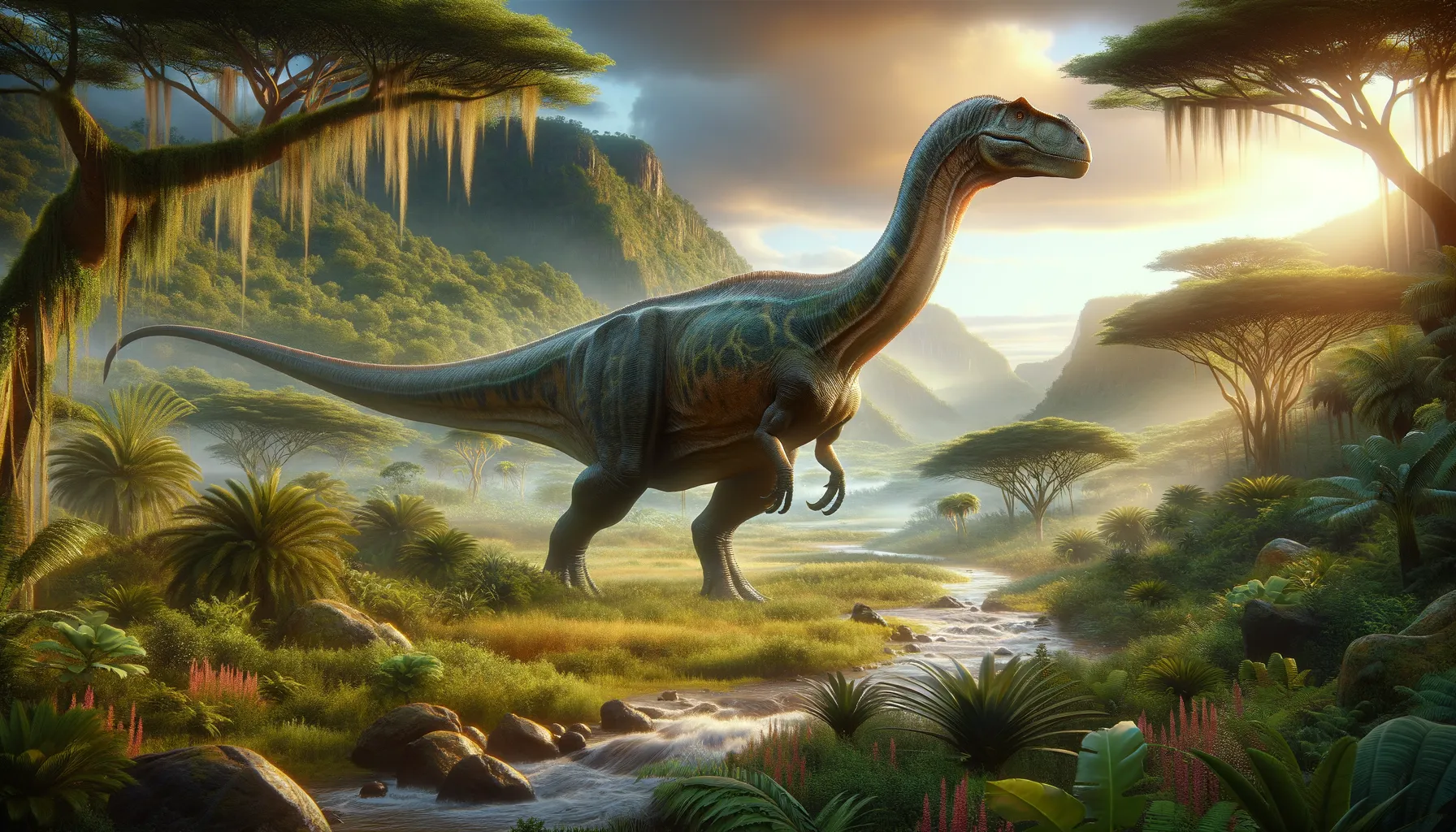
Janenschia
The gentle giant of the Jurassic age.
Period
Jurassic
Length
Roughly 80 feet long.
Height
Up to 12 feet at the hip.
Weight
Around 15 metric tons.
Janenschia was a massive sauropod dinosaur that roamed the landscapes of what is now Africa during the Jurassic Period. Known for its long neck and tail, this plant-eater thrived in lush environments. Its impressive size provided it with protection from carnivorous predators. Although its remains are relatively rare, Janenschia remains an essential piece of prehistoric history, helping paleontologists understand the ecosystem dynamics of its time.
Diet
Janenschia was a herbivore, primarily consuming a diet of plant material. Its long neck allowed it to reach high vegetation that other herbivores couldn't access.
Hunting
Janenschia did not hunt as it was a plant-eater. Instead, it foraged for leaves and greenery in the forests and plains.
Environmental challenges
Janenschia lived in an environment subject to changing climates, from wet to drier conditions. It had to navigate extensive landscapes in search of suitable food and water sources. The presence of other large herbivores might have created competition for food resources.
Speed
Slow-moving due to its massive size.
Lifespan
Likely several decades, similar to large herbivores.
First discovery
Discovered in Tanzania in the early 20th century.
Fun Facts
- Janenschia was a dinosaur that lived during the Late Jurassic period, around 150 million years ago.
- It was a massive sauropod, meaning it was a long-necked, plant-eating dinosaur.
- Janenschia was named after Werner Janensch, a German paleontologist who worked extensively in Africa.
- Fossils of Janenschia were discovered in Tanzania, which was once part of the supercontinent Gondwana.
- Unlike some better-known sauropods, Janenschia is not that famous but it helps scientists understand the diversity of dinosaurs in its time.
- Janenschia is estimated to have been about 50 feet long, which is roughly the length of a city bus.
- The remains of Janenschia have contributed valuable insights into the evolutionary relationships among sauropods.
Growth and Development
Growth in Janenschia was likely slow and steady, much like present-day large reptiles. Juveniles relied on staying close to adults for protection and learning how to find food. This gradual development allowed them to adapt to their plant-rich environments efficiently.
Habitat
Janenschia inhabited forested areas and open plains where lush vegetation was abundant. Access to water sources likely influenced its habitat range. It preferred regions where it could forage without having to travel long distances for sustenance.
Interaction with other species
As a large herbivore, Janenschia likely coexisted with other sauropods and plant-eaters in a balanced ecosystem. Its size afforded it protection from predatory dinosaurs. It may have unintentionally shaped its environment by trampling and feeding on vegetation.
Natural lifespan
Janenschia lived naturally as long as food and environmental conditions were stable, possibly several decades.
Reproduction
Janenschia likely laid eggs, as inferred from other sauropods. It might have used nesting sites to ensure the safety of its young. Parental care was possibly minimal once eggs were laid.
Social behaviour
Janenschia may have exhibited social behavior, moving in herds for protection and social interaction. Its herd movement would have helped individuals find food and navigate through their environment. Social groups would have offered safety in numbers against potential threats.
Fossil locations
The fossils of Janenschia have primarily been found in Tanzania. These discoveries provide crucial insights into its living conditions and ecosystems. The remains help paleontologists unearth connections between sauropods across different continents.
